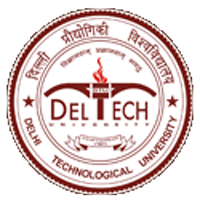Please use this identifier to cite or link to this item:
http://dspace.dtu.ac.in:8080/jspui/handle/repository/22290Full metadata record
| DC Field | Value | Language |
|---|---|---|
| dc.contributor.author | IQBAL, MOHMAD | - |
| dc.date.accessioned | 2025-11-07T05:58:06Z | - |
| dc.date.available | 2025-11-07T05:58:06Z | - |
| dc.date.issued | 2025-10 | - |
| dc.identifier.uri | http://dspace.dtu.ac.in:8080/jspui/handle/repository/22290 | - |
| dc.description.abstract | This thesis presents a comprehensive fault diagnosis system for CNC (Computer Numerical Control) machine tools, incorporating ML and DL techniques to enhance the recognition and sorting of faults. CNC machines, essential in modern manufacturing, are susceptible to various faults, particularly in components like bearings, which can lead to significant downtime and production losses. Traditional fault diagnosis methods rely heavily on expert knowledge and experience, which may not be sufficient for detecting complex faults. The proposed system aims to overcome these limitations by utilizing advanced data-driven techniques to automate and improve fault diagnosis accuracy. The study begins with a review of existing fault diagnosis methods, including traditional approaches such as visual inspection, sound analysis, vibration analysis, and temperature measurement. While effective for simple faults, these methods often fail to identify more complex issues due to their reliance on manual analysis and expert judgment. In contrast, data-driven approaches, specifically machine learning and deep learning, offer the potential to study outlines and relationships in sensor data, enabling the detection of faults that traditional methods might miss. Numerous signal processing methods identify important features from vibration and acoustic data gathered from CNC machine tools under different working conditions. Techniques such as Wavelet Transform, Empirical Mode Decomposition (EMD), and Principal Component Analysis (PCA) are applied to process the data, helping to remove noise and emphasize key features necessary for detecting faults. Afterward, machine learning algorithms like Support Vector Machines (SVM), k-nearest Neighbours (k-NN), Random Forests, and Decision Trees are trained using these extracted features to classify different fault types. The effectiveness of these algorithms is then assessed through performing metrics, incorporating accuracy, precision, recall, and F1-score, to identify the best machine learning model for fault diagnosis. Building on the findings, deep learning techniques such as Convolutional Neural Networks (CNNs) and Recurrent Neural Networks (RNNs) are applied to the same dataset. These advanced models can vi automatically learn structured data representations, which helps identify more complex patterns that simpler models may miss. This research examines the performance of these deep learning models compared to traditional machine learning. Approaches, focusing on their improved ability to process high- dimensional data and their resilience in noisy environments. The experimental validation uses real-world data from CNC machines functioning under different fault conditions. The findings show that the proposed fault diagnosis system greatly enhances fault detection accuracy compared to conventional methods. Specifically, deep learning models, particularly CNNs, exceed the performance of traditional machine learning techniques in terms of both accuracy and robustness, demonstrating the potential of deep learning to create automated fault diagnosis systems for industrial applications. Furthermore, this thesis makes several key contributions to fault diagnosis. It provides a novel framework for integrating machine learning and deep learning techniques with signal processing to create a robust and efficient fault diagnosis system. The findings suggest that the proposed system can be effectively applied in various industrial contexts, including manufacturing, transportation, and energy, to enhance machine tool maintenance, reduce downtime, and improve overall operational efficiency. In conclusion, this thesis establishes the feasibility and benefits of using advanced data-driven techniques for fault diagnosis in CNC machine tools. Combining signal processing, machine learning, and deep learning, the proposed system offers a scalable and effective solution for automating fault detection and classification, ensuring high reliability and performance in modern manufacturing environments. | en_US |
| dc.language.iso | en | en_US |
| dc.relation.ispartofseries | TD-8290; | - |
| dc.subject | CNC MACHINE | en_US |
| dc.subject | ADABOOST | en_US |
| dc.subject | BEARING FAULT DIAGNOSIS | en_US |
| dc.subject | STFT | en_US |
| dc.subject | HSD | en_US |
| dc.subject | CNN | en_US |
| dc.subject | LENET-5 | en_US |
| dc.subject | PCA | en_US |
| dc.title | DEVELOPMENT OF ARTIFICIAL INTELLEGENCE (AI) BASED BEARING FAULT DIAGNOSIS SYSTEM FOR CNC MACHINE TOOLS | en_US |
| dc.type | Thesis | en_US |
| Appears in Collections: | Ph.D. Mechanical Engineering | |
Files in This Item:
| File | Description | Size | Format | |
|---|---|---|---|---|
| MOHMAD IQBAL Ph.D..pdf | 3.83 MB | Adobe PDF | View/Open |
Items in DSpace are protected by copyright, with all rights reserved, unless otherwise indicated.



